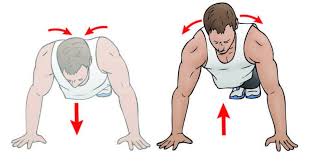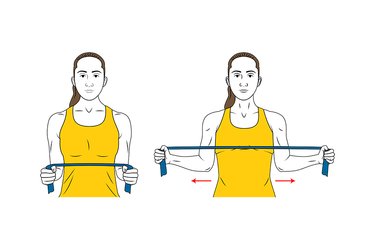
Shoulder Mobility Exercises to Include Into Your Routine!
If you struggle with tight or nagging shoulder injuries, these 9 dynamic shoulder warm-up exercises are perfect for you.
Shoulder problems are quite common, but by incorporating simple arm and rotator cuff warm-up exercises, most of which require no equipment, you can effectively prevent or address many issues.
The following shoulder mobility exercises can be done before your workout or as part of a routine to keep your shoulders mobile and healthy.
Let’s dive in!
Understanding the Shoulder Joint
The shoulder is a complex joint that must balance both mobility and stability—no easy task. Unlike the hip, the shoulder is a shallow ball-and-socket joint. The ball, located at the end of the humerus, fits into the socket of the shoulder blade, while the rotator cuff muscles surround the joint, keeping it in place and controlling arm movement.
Above the humerus sits the acromioclavicular joint, where the collarbone meets the shoulder blade, providing additional support for overhead movements. The scapula (shoulder blade), which the arm hangs from, isn’t a fixed joint, allowing free movement across the back of the ribcage.
Shoulder problems often arise when the joint becomes stiff, overloading certain rotator cuff muscles, or when the scapula is unstable, creating a poor foundation for arm movement. You can think of the scapula as the difference between fishing from a rocking boat (unstable) versus fishing from solid ground (stable).
Proper arm movement begins by bracing the core to stabilize the spine, followed by stabilizing the scapula to create a strong base for arm movements. This stabilization happens in milliseconds and in a specific order, moving from the inside out.
The key muscles that stabilize the scapula are the serratus anterior and lower trapezius. When these muscles fail to do their job, your neck and upper trapezius may take over, leading to more problems.
Given the small size of the shoulder muscles and the long lever (your arm) they control, it’s critical to maintain flexibility and proper alignment to ensure smooth and efficient movement. If the shoulder muscles are weak, overstretched, or injured, dislocations or abrasions can occur as the head of the humerus slips off the joint.
Most daily shoulder movements involve inward rotation, which creates an imbalance in shoulder strength. This imbalance can lead to ongoing issues, as some muscles weaken while others become overworked.
Fixing Shoulder Problems
Many shoulder issues can be resolved by increasing shoulder joint mobility and improving scapular stability. Problems often arise when the scapula compensates for poor shoulder mobility, or the shoulder compensates for poor scapular stability.
By restoring each to its proper function, you allow both to heal and perform more effectively. When dealing with an existing issue, be careful not to overdo it—listen to your body, and remember that consistency with moderate effort is more effective than infrequent, intense efforts.
Step-by-Step Shoulder Warm-Up Routine
1. Arm Circles (30 seconds each direction)
- What it Does: Warms up the rotator cuff and increases blood flow to the shoulders.
- How to Do It: Stand tall with arms extended out to your sides. Begin by making small circles, gradually increasing their size. Reverse the direction halfway through.
- Tip: Keep your movements controlled and your core engaged to avoid swinging the arms too fast.

2. Scapular Push-Ups (10-12 reps)
- What it Does: Activates the muscles around your shoulder blades, improving shoulder stability.
- How to Do It: Start in a push-up position with your arms fully extended. Without bending your elbows, squeeze your shoulder blades together and then push them apart.
- Tip: Focus on small, controlled movements; it’s about shoulder blade activation, not arm movement.

3. Banded Shoulder Dislocates (10 reps)
- What it Does: Stretches the chest, shoulders, and upper back while promoting shoulder mobility.
- How to Do It: Hold a resistance band or broomstick in front of you with a wide grip. Slowly raise it overhead and bring it behind your head, then reverse the motion. Keep your arms straight throughout.
- Tip: Adjust your grip based on your shoulder flexibility—wider if you need more room, narrower as you get more flexible.

4. Banded External Rotations (10 reps per side)
- What it Does: Strengthens the rotator cuff muscles, improving shoulder stability and injury prevention.
- How to Do It: Attach a resistance band to a fixed point at elbow height. Stand with your side facing the band, holding it with the hand farthest away. Keeping your elbow at a 90-degree angle and tucked into your side, rotate your arm outward against the resistance, then return slowly to the starting position.
- Tip: Use light resistance and focus on controlled movements. Keep your elbow stationary to isolate the rotator cuff.

5. Thread the Needle Stretch (30 seconds per side)
- What it Does: Loosens tightness in the upper back and shoulders.
- How to Do It: Start on all fours. Slide your right arm under your left, bringing your shoulder and head to the floor. Hold and breathe deeply, then repeat on the other side.
- Tip: Keep your hips stable and focus on the stretch through your upper back and shoulder.

6. Wall Slides (10-12 reps)
- What it Does: Improves shoulder mobility and corrects poor posture by targeting the muscles responsible for shoulder movement.
- How to Do It: Stand with your back flat against a wall. Press your arms and elbows against the wall in a “W” shape, then slide them up into a “Y” without letting your arms lose contact with the wall.
- Tip: Keep your lower back and shoulders pressed against the wall for the entire movement.

Bonus Mobility Drills
1. Doorway Stretch (30 seconds per side)
- How to Do It: Stand in a doorway and place your hands at shoulder height on the frame. Step forward until you feel a stretch in your chest and shoulders. Hold for 30 seconds.
- Why it Helps: Opens up the chest and helps relieve the tightness that limits shoulder mobility.
2. Shoulder CARs (Controlled Articular Rotations) (5 reps each arm)
- How to Do It: Stand with feet shoulder-width apart. Slowly rotate your arm in a large circular motion, reaching overhead and behind you. Keep your core engaged and control the movement throughout the entire rotation.
- Why it Helps: Encourages controlled movement through the shoulder joint’s full range of motion.
Tips for Better Shoulder Mobility & Injury Prevention
- Warm-Up First: Always start with a warm-up to increase blood flow to the shoulders before stretching or lifting.
- Strengthen Key Muscles: Strong rotator cuff muscles will support the shoulder joint and reduce the risk of injury.
- Consistency is Key: Perform this warm-up regularly to see long-term improvements in your shoulder mobility and flexibility.
- Listen to Your Body: If you feel sharp pain or discomfort during any exercise, stop immediately and consult a professional.
Final Thoughts
Improving your shoulder mobility is essential for avoiding injuries, enhancing performance, and maintaining a healthy range of motion. With this quick and easy routine, you can unlock better movement and pain-free shoulders.
Ready for more? Follow this routine before every workout to prime your body and maximize your results.
For personalized shoulder mobility plans and fitness coaching, reach out to me at @mr.salazarlifts or directly through ABC Trainerize.



